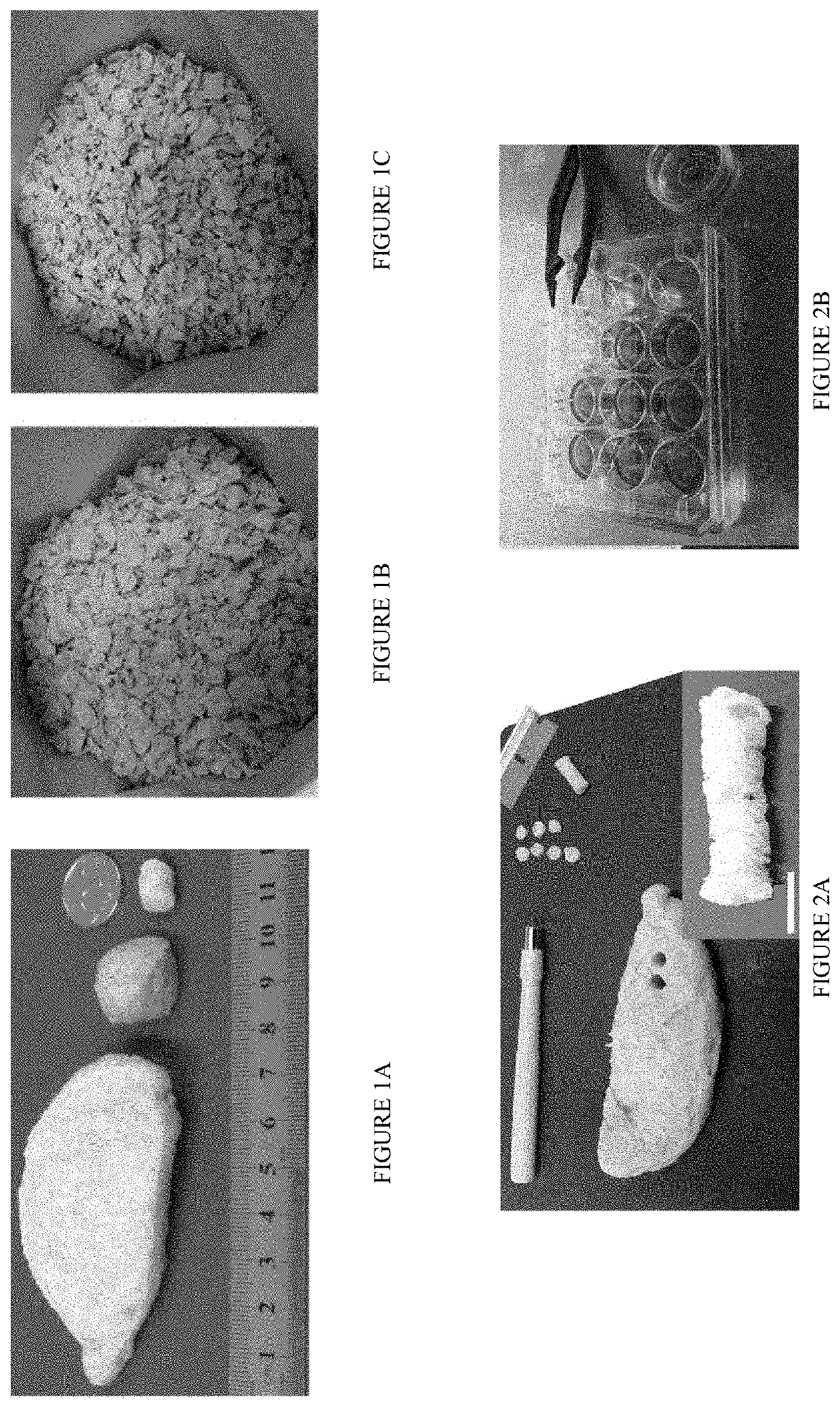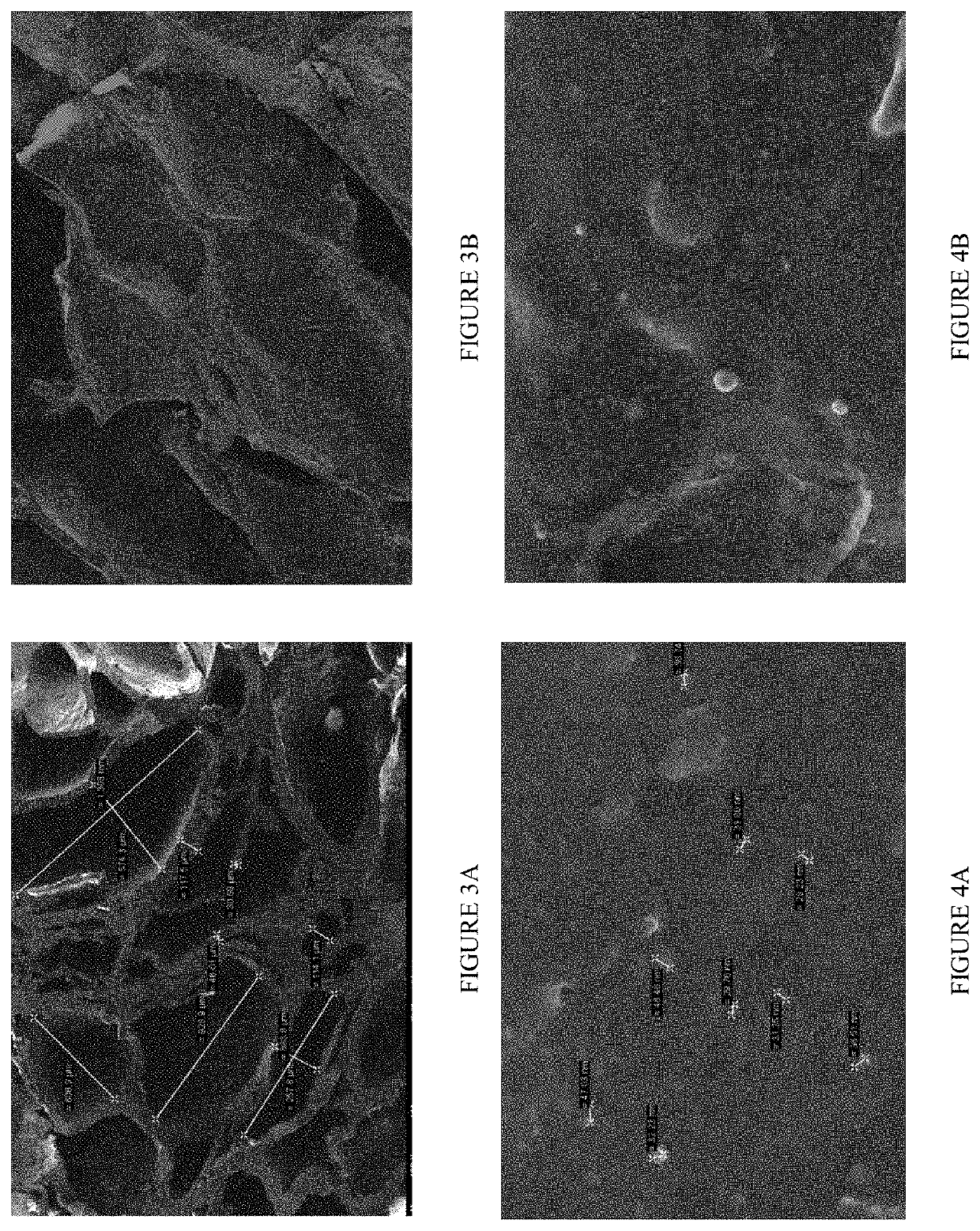Cultured meat compositions
a technology of compositions and cultured meats, applied in the field of compositions of cultured meats, can solve the problems of inability to sustain traditional meat production systems, inefficient food produced using animals, and large environmental footprint of all animal-based products, and achieve the effects of increasing promoting stabilization of vessel structure over time, and enhancing vascularization and scaffold coverag
- Summary
- Abstract
- Description
- Claims
- Application Information
AI Technical Summary
Benefits of technology
Problems solved by technology
Method used
Image
Examples
example 1
Three Dimensional Structure Analysis of a TSP Porous Scaffold
[0145]TSP scaffolds were examined using scanning electron microscopy (SEM) to analyze their three-dimensional (3D) structure both at the micron and the nano scale. The 100× images showed the TSP was porous with 100-1,000 μm pore size, which can be used for cell culture. It was shown that the wall in the big-TSP were thicker compared to the medium sourced TSP (FIGS. 3A and 3B). SEM images (2×105 magnification) of the large TSP showed that the TSP comprised 30 nm ball shaped protein clusters. Analysis of the medium TSP showed more amorphous glue-like material between those clusters (FIGS. 4A and 4B).
example 2
Growth and Proliferation of Fibroblasts Cultured on a Porous Scaffold
[0146]Attachment and proliferation of fibroblasts on a TSP scaffold were examined. First, 50,000 dermal fibroblasts which were labeled with RFP, were seeded on a TSP scaffold, and cultured. Following 14 days of incubation, the TSP scaffold, which was populated with dermal fibroblasts, was additionally seeded with 200,000 endothelial cells, and incubated for additional 7 days. Samples of TSP populated with cells were immune-stained and imaged using a confocal microscopy, at 8, 18 and 21 days following seeding of the fibroblasts. Results demonstrated that the fibroblasts proliferated and covered the TSP scaffold even when seeded at the low cell number of 50,000 cells (FIG. 5A). Following the seeding of the endothelial cells (FIG. 5B), the endothelial cells gathered into clusters (FIG. 5C). Next, scaffolds from each scaffold source and scaffolds cut from 90° to the surface direction of the TSP were examined. Each of t...
example 3
Growth of Myoblasts Cultured on a Porous Scaffold
[0147]In order to assess the applicability of generating a muscle tissue, experiments were conducted to examine whether muscle cells can grow on the TSP scaffold.
[0148]For this purpose, 0.5×106 myoblasts were seeded on TSP scaffolds and cultured in the presence of a differentiation medium which was low on serum and thus fitted better for cultured meat production. The images of the myoblasts at day 14 (FIG. 7) showed that the myoblasts proliferated on the TSP scaffold, indicating that cells can fill the scaffold after 14 days of culture.
PUM
 Login to View More
Login to View More Abstract
Description
Claims
Application Information
 Login to View More
Login to View More - R&D
- Intellectual Property
- Life Sciences
- Materials
- Tech Scout
- Unparalleled Data Quality
- Higher Quality Content
- 60% Fewer Hallucinations
Browse by: Latest US Patents, China's latest patents, Technical Efficacy Thesaurus, Application Domain, Technology Topic, Popular Technical Reports.
© 2025 PatSnap. All rights reserved.Legal|Privacy policy|Modern Slavery Act Transparency Statement|Sitemap|About US| Contact US: help@patsnap.com



